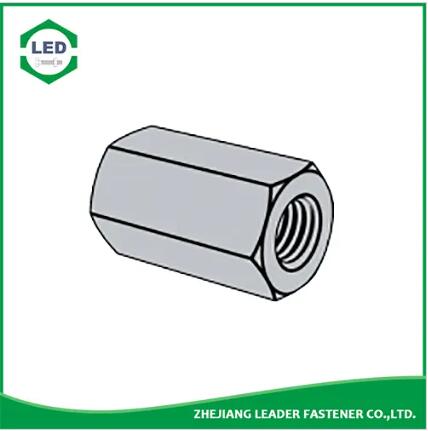How does ANSI B18.2.2 relate to other standards or specifications for fasteners or threaded components?
2023-10-17
ANSI B18.2.2, which covers the specifications for rod coupling nuts, is part of a broader set of standards and specifications related to fasteners and threaded components. These standards are developed by various organizations to ensure consistency, quality, and compatibility in fastener-related products. Here's how ANSI B18.2.2 relates to other standards and specifications:
1. Unified Thread Standards: ANSI B18.2.2 specifies rod coupling nuts with Unified National Coarse (UNC), Unified National Fine (UNF), and metric threads. These thread specifications are part of the Unified Thread Standards, which include various thread types and sizes used in a wide range of fasteners and threaded components. These standards ensure thread compatibility and interchangeability among different components.
2. ASTM Standards: The American Society for Testing and Materials (ASTM) develops standards for various materials used in fasteners, including steel, stainless steel, and other alloys. ANSI B18.2.2 may reference ASTM material standards to specify the material properties and characteristics of rod coupling nuts.
3. ISO Standards: In addition to Unified Thread Standards, ANSI B18.2.2 may reference International Organization for Standardization (ISO) standards for metric thread profiles and specifications. This ensures alignment with international thread standards, making the nuts suitable for global applications.
4. ASME Standards: The American Society of Mechanical Engineers (ASME) develops standards for various mechanical components, including fasteners. ASME B18 standards cover a wide range of fasteners and threaded components, and ANSI B18.2.2 may reference or align with ASME B18 standards in terms of design, material selection, or testing requirements.
5. Industry-Specific Standards: Depending on the application, ANSI B18.2.2 may be used in conjunction with industry-specific standards. For example, in the construction industry, the use of rod coupling nuts may be governed by specific building codes and standards that outline their requirements and use in construction projects.
6. Manufacturer Specifications: Manufacturers of rod coupling nuts may provide their own specifications and guidelines for their products. These specifications can include details on performance, material properties, and recommended usage.
7. Local Building Codes: In construction and structural engineering applications, rod coupling nuts must often comply with local building codes and regulations. These codes may reference ANSI standards and other relevant guidelines for fasteners and connectors.
8. Threaded Rod Standards: ANSI B18.2.2 specifically addresses rod coupling nuts, which are used with threaded rods or studs. Standards for threaded rods, such as ASTM F1554, may be referenced alongside ANSI B18.2.2 to ensure compatibility between the rod and the nut.
Overall, ANSI B18.2.2 is part of a larger ecosystem of standards that collectively define the requirements, specifications, and quality standards for fasteners and threaded components. When using rod coupling nuts, it's essential to consider the relevant standards, codes, and specifications to ensure that the nuts meet the specific needs of the application and comply with industry and regulatory requirements.



